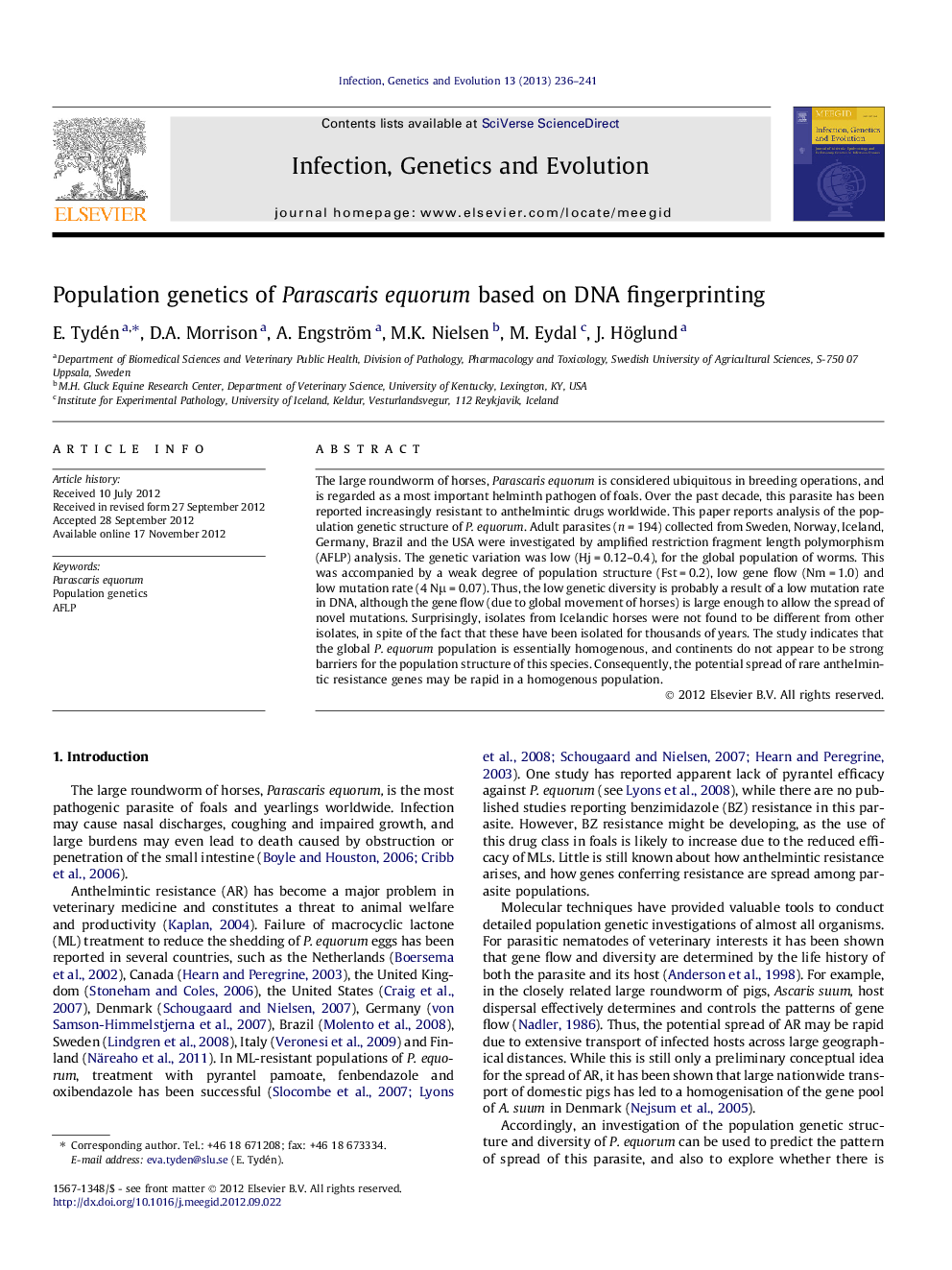| Article ID | Journal | Published Year | Pages | File Type |
|---|---|---|---|---|
| 5911019 | Infection, Genetics and Evolution | 2013 | 6 Pages |
The large roundworm of horses, Parascaris equorum is considered ubiquitous in breeding operations, and is regarded as a most important helminth pathogen of foals. Over the past decade, this parasite has been reported increasingly resistant to anthelmintic drugs worldwide. This paper reports analysis of the population genetic structure of P. equorum. Adult parasites (n = 194) collected from Sweden, Norway, Iceland, Germany, Brazil and the USA were investigated by amplified restriction fragment length polymorphism (AFLP) analysis. The genetic variation was low (Hj = 0.12-0.4), for the global population of worms. This was accompanied by a weak degree of population structure (Fst = 0.2), low gene flow (Nm = 1.0) and low mutation rate (4 Nμ = 0.07). Thus, the low genetic diversity is probably a result of a low mutation rate in DNA, although the gene flow (due to global movement of horses) is large enough to allow the spread of novel mutations. Surprisingly, isolates from Icelandic horses were not found to be different from other isolates, in spite of the fact that these have been isolated for thousands of years. The study indicates that the global P. equorum population is essentially homogenous, and continents do not appear to be strong barriers for the population structure of this species. Consequently, the potential spread of rare anthelmintic resistance genes may be rapid in a homogenous population.
⺠Continents are not strong barriers for the population structure of Parascaris equorum. ⺠The global P. equorum worm populations are essentially genetically homogenous. ⺠In spite of long-term isolation Icelandic isolates were not found genetically different from other isolates. ⺠The efficacy of fenbendazole against P. equorum was 100% in Sweden.
